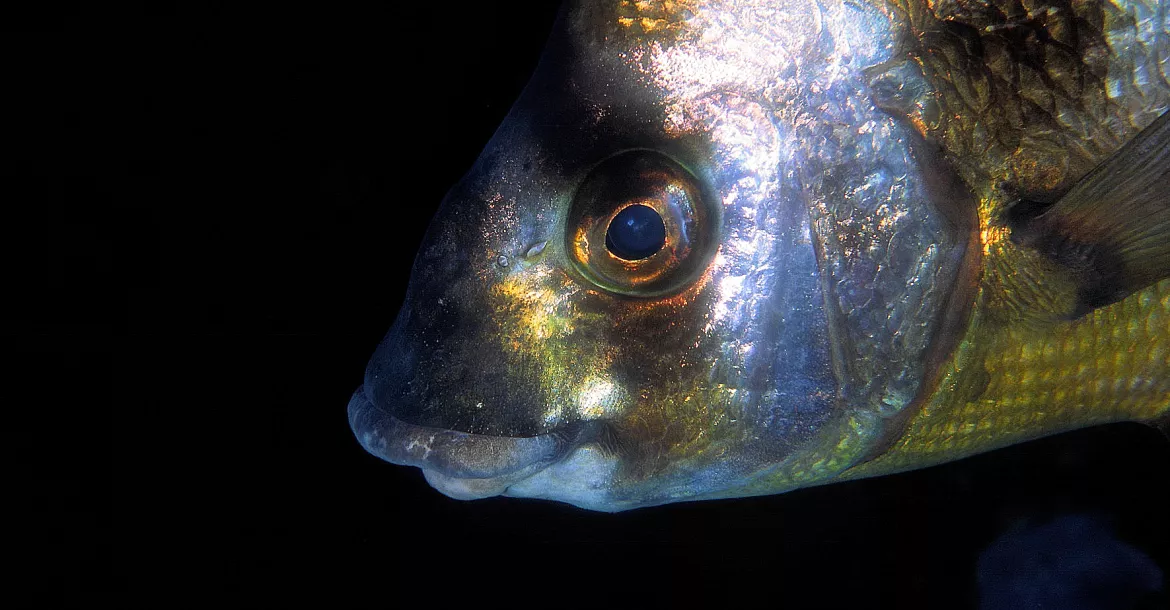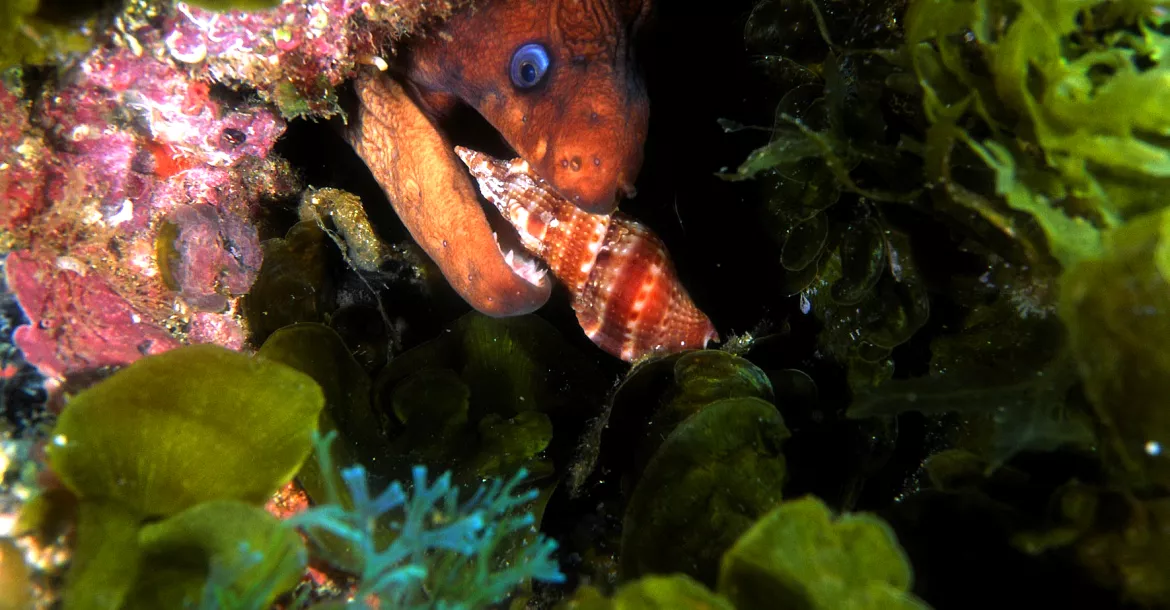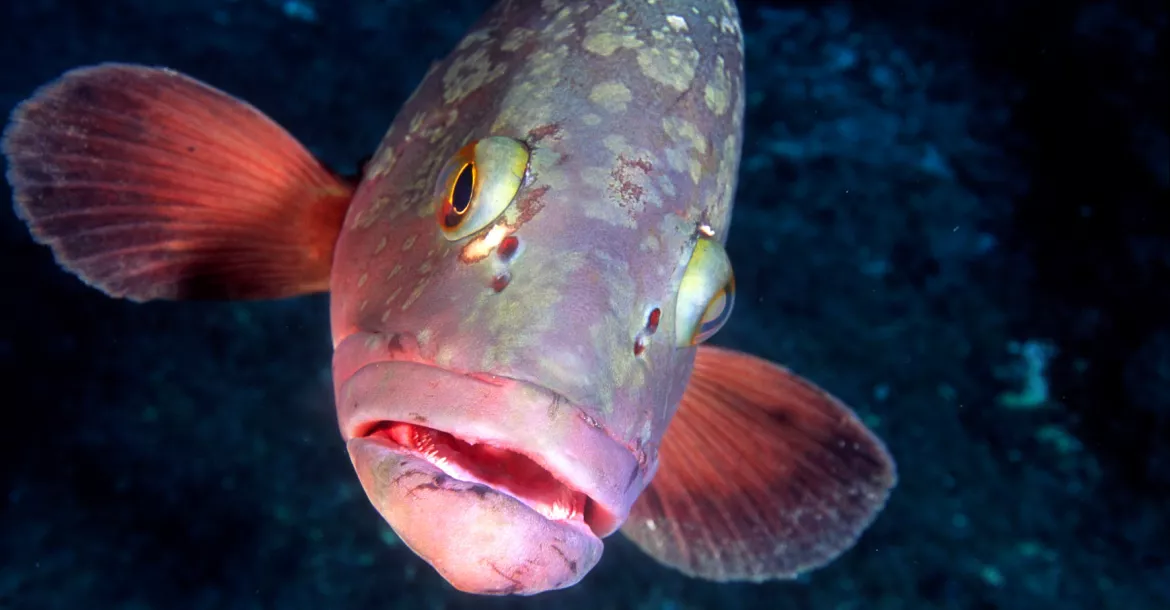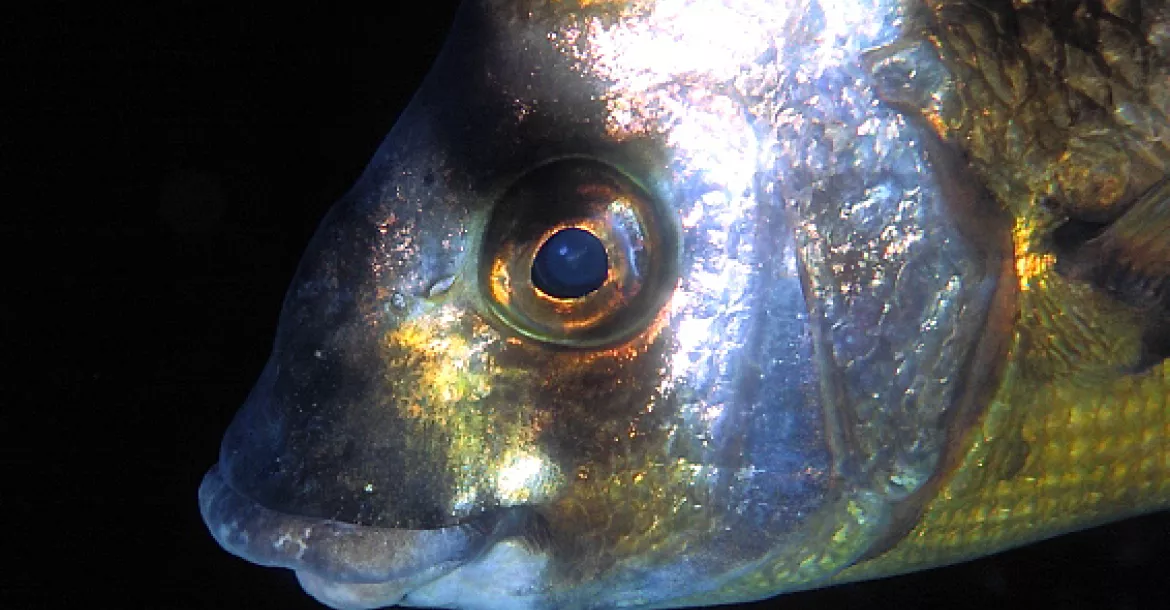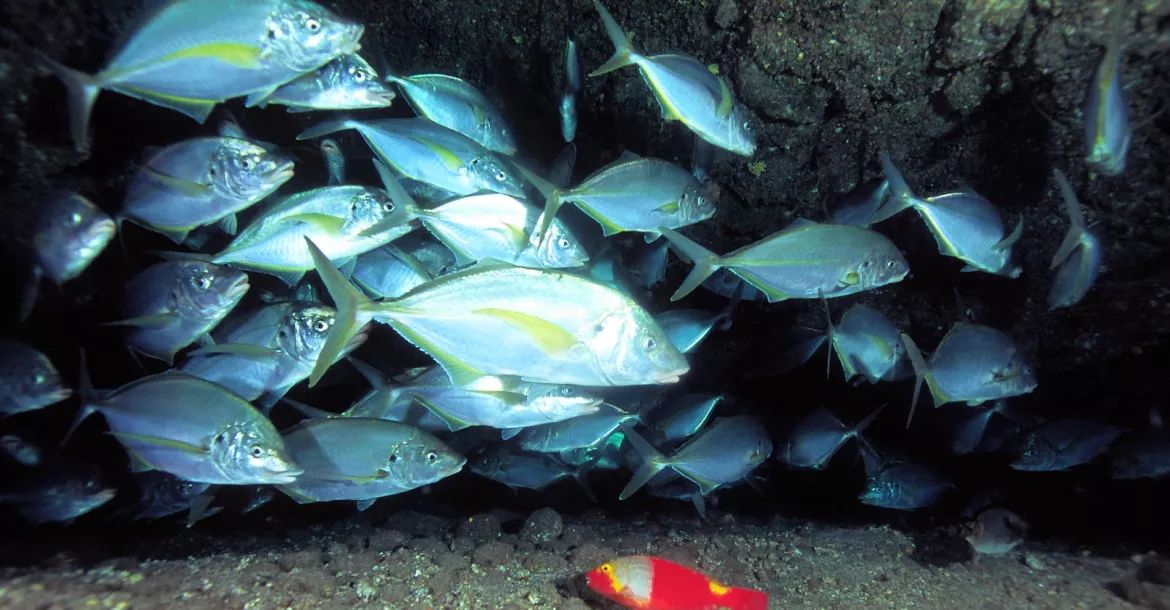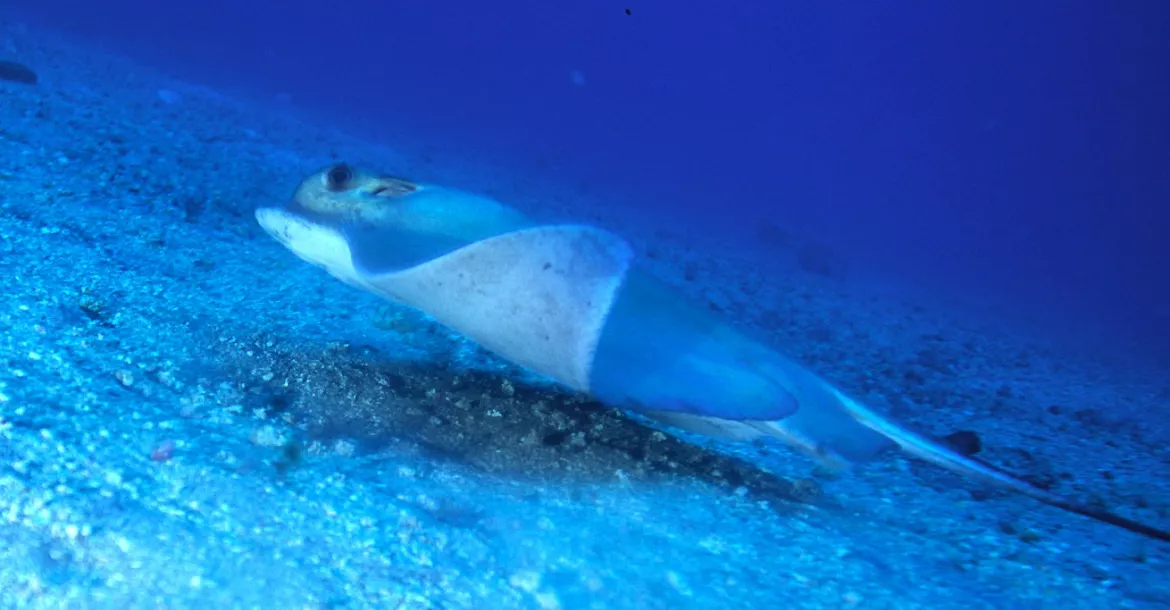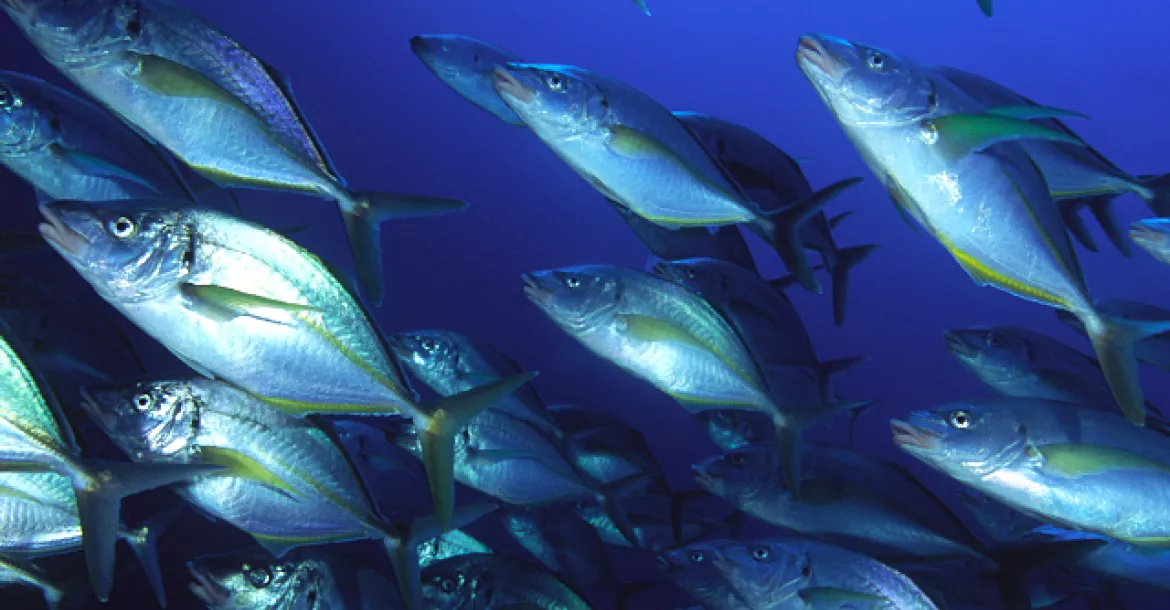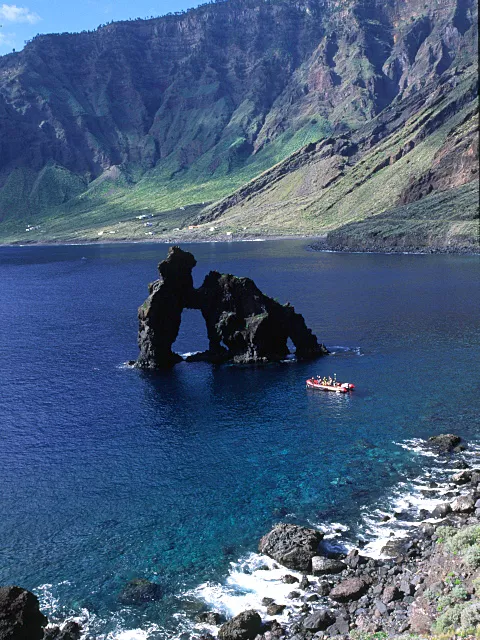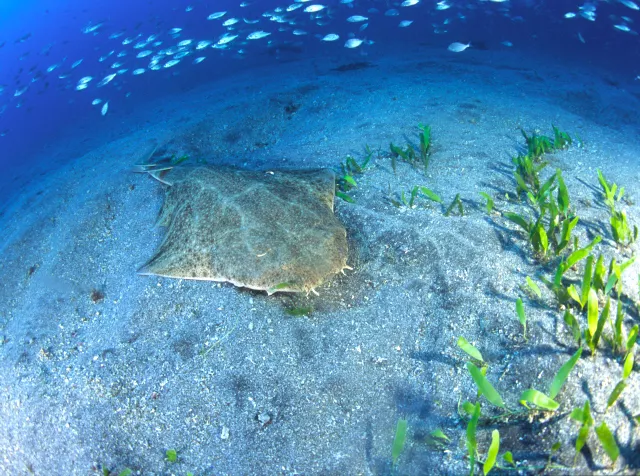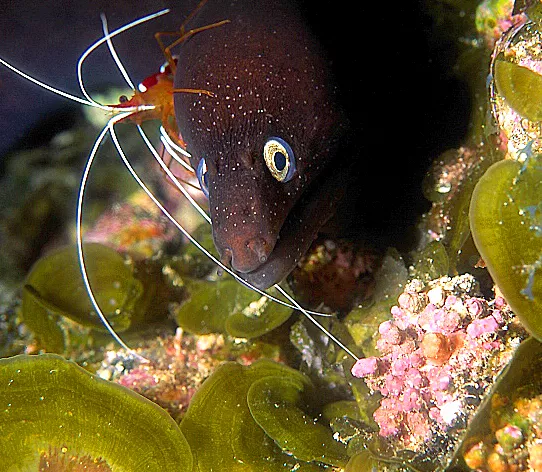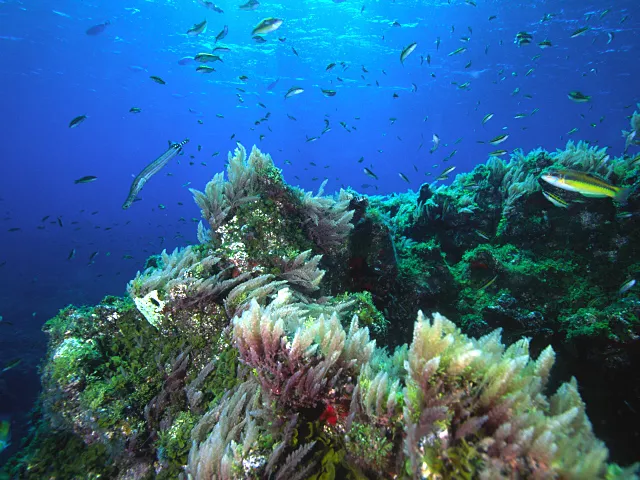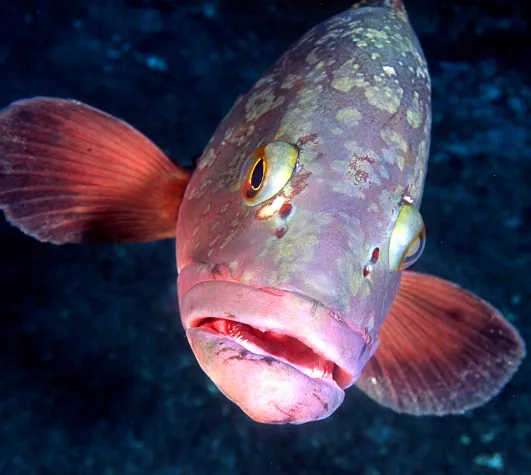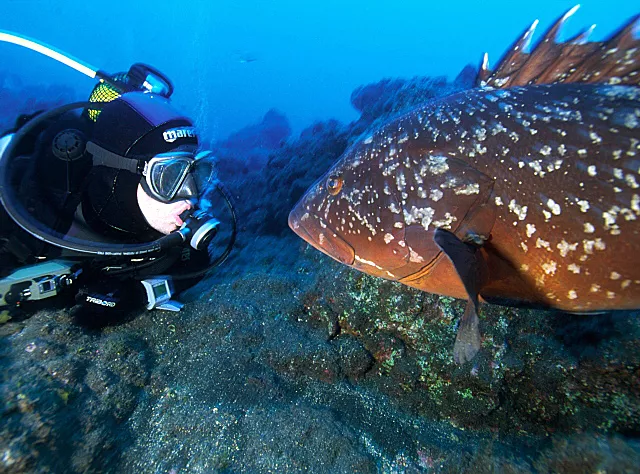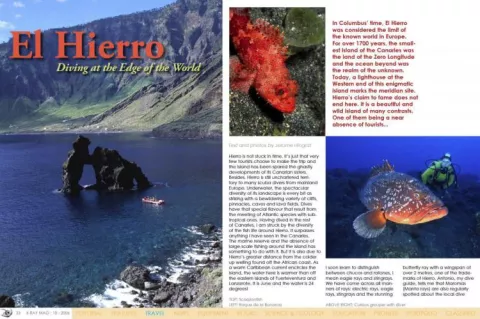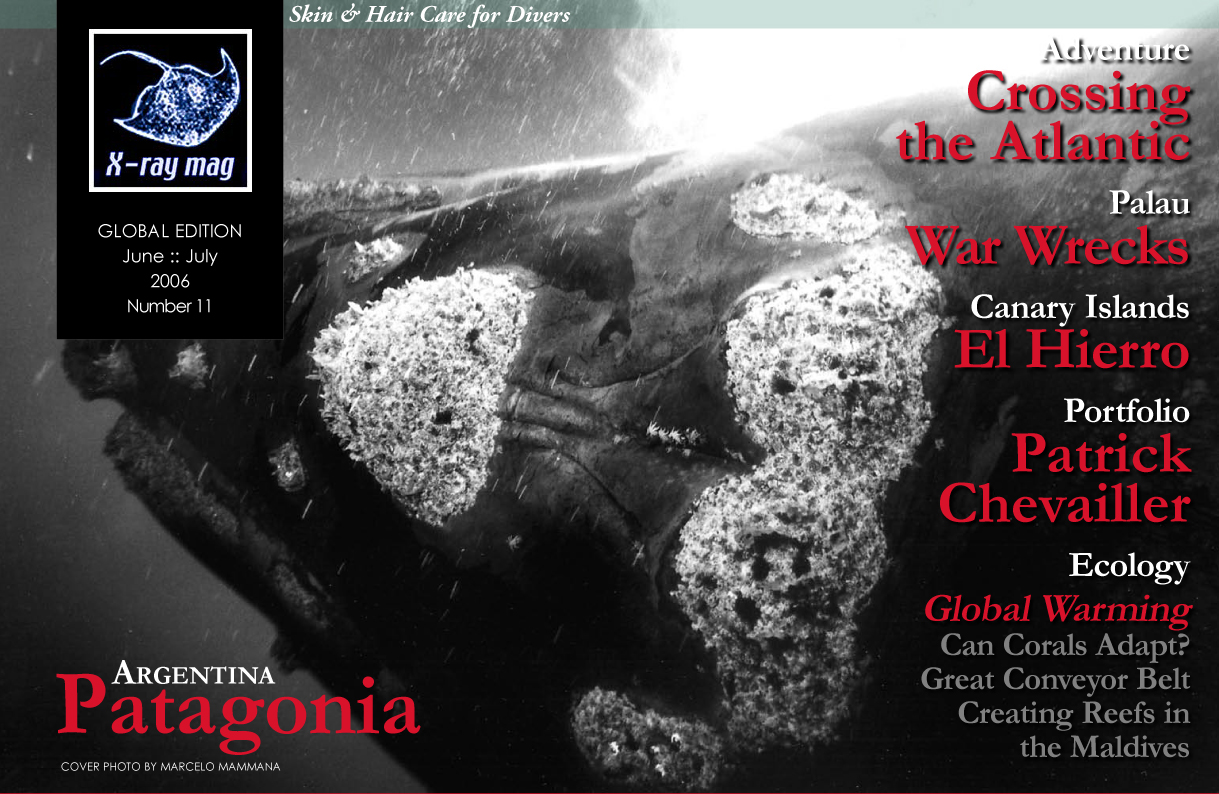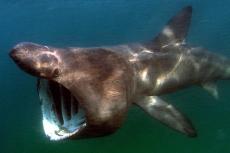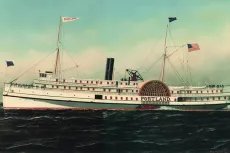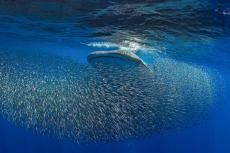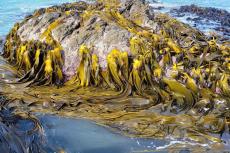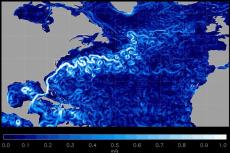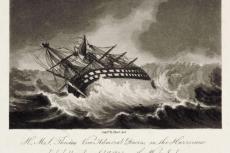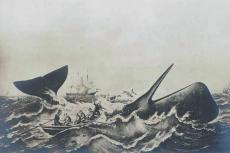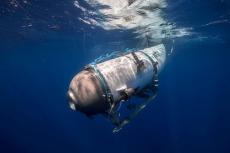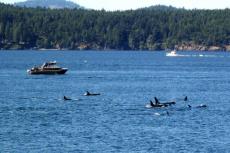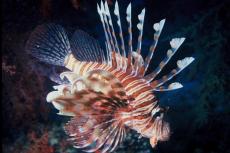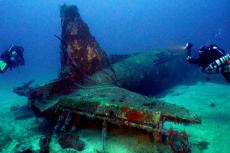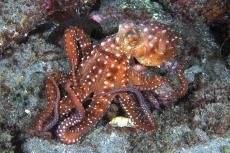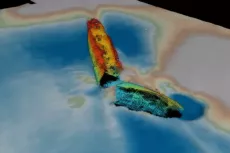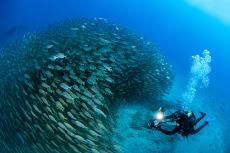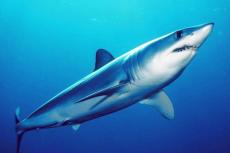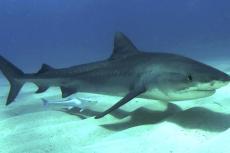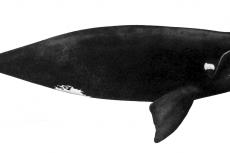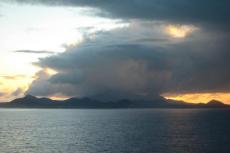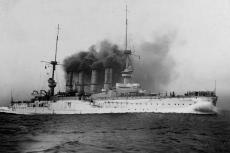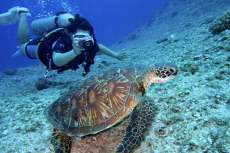In Columbus’ time, El Hierro was considered the limit of the known world in Europe. For over 1700 years, the smallest island of the Canaries was the land of the Zero Longitude and the ocean beyond was the realm of the unknown. Today, a lighthouse at the Western end of this enigmatic island marks the meridian site. Hierro’s claim to fame does not end here. It is a beautiful and wild island of many contrasts. One of them being a near absence of tourists...
Contributed by
Factfile
Jerome Hingrat is a freelance underwater photo journalist.
His articles and images have been published in Sport Diver in the UK, Océans in France and FINS in Ireland.
He is an avid traveller and is currently working on his first book of photographs.
For more information, please visit: www.jeromehingrat.com or email jeromehingrat@eircom.net
Dives have that special flavour that result from the meeting of Atlantic species with subtropical ones. Having dived in the rest of Canaries, I am struck by the diversity of the fish life around Hierro. It surpasses anything I have seen in the Canaries. The marine reserve and the absence of large-scale fishing around the island has something to do with it.
But it is also due to Hierro’s greater distance from the colder up welling found off the African coast. As a warm Caribbean current encircles the island, the water here is warmer than off the eastern islands of Fuerteventura and Lanzarote. It is June and the water is 24 degrees!
I soon learn to distinguish between chucos and ratones, I mean eagle rays and stingrays. We have come across all manners of rays: electric rays, eagle rays, stingrays and the stunning butterfly ray with a wingspan of over 2 metres, one of the trademarks of Hierro. Antonio, my dive guide, tells me that Maromas (Manta rays) are also regularly spotted about the local dive sites. I put this down to a bit of Spanish blarney.
But, back at the centre, a glance at the many photographs taken locally tell the story of their regular sightings. They even have a video of their last sighting filmed around the site of El Bajon. And the list doesn’t just end here. Last month, a whale shark was spotted further off the coast and photographed by local divers.
Deep waters
In the absence of a continental shelf, deep waters are found very close to the shore. And it is not uncommon to encounter dolphin and pilot whales on your way to a dive site. In the case of El Bajon, the most popular dive spot, the shore is within swimming distance. A steep double-humped pinnacle, El Bajon combines spectacular scenery and fish life. Oceanic currents ensure a constant supply of nutrients and a regular supply of visitors such as barracudas, bonitos, triggerfish, amber jacks, etc.
I find myself drawn back to this site during my stay, which is less than ten minutes by RIB from the harbour. The temptation to go deeper in 30 m visibility is hard to resist... And if you want depth, El Bajon has plenty of it with maximum depths down to 70 metres! The saddle part in 10-15 metres is full of action and great for fish life. The place teems with a great variety of fish, from large pelagics to the shy Canarian lobster. One of its highlights is the swarms of bright ornate wrasse spawning en masse. If you want action and exciting photo opportunities, look no further, El Bajon has it all, strong currents included. The cliff-like walls of the pinnacle offer protection for a safety stop.
In between dives, I decide to check the harbour after talking to Antonio. I slip off the moored RIB while everybody heads for lunch. As I make my way to the bottom, the dark sand seems to lift off: a large butterfly ray takes off like a magic carpet. Who says my camera should be turned off when the horizon looks deceptively clear? While I curse my luck, two large stingrays take off in the opposite direction.
On another lunch dive, I come across a large nurse shark asleep in the sand. All this, in just eight metres off the harbour mouth, where the rays are known to hide in the dark ripples of the lava sand. Returning to the pier after nearly 80 minutes in the water, I find a turtle within meters of the pier. I’m out of film but not out of luck as a local man tells me that the turtle is always around. Before I know it, I find myself considering another dive in the harbour!
Fish life
The ray saga continues off El Dessierto (the Desert) where we come face to face with an impressive electric ray perfectly camouflaged with its beady eyes peering at us. If it wasn’t for our guide, I would have missed it in spite of its size. On every dive, bright fire worms can been seen crawling on the dark volcanic sand and to say they’re hard to photograph would be the biggest lie of the century. That’s the thing with Hierro, macro or wide-angle, you can find subjects for every lens.
For a second, shallower dive, local caves abound this end of the island. This is where the boxfish and tamboril are found hiding in the dark and it takes a torch to ferret them out of their crevices. Some grow to considerable size and inflate their spiny body to scare off their predator. In a local cave, we spot six Canarian lobsters on a ledge and a beautiful pair of red nudibranchs. On the way out of another cave at El Salto, we come across a shoal of trumpet fish, resting motionless in a dense formation, oblivious to our presence.
Marine reserve
Since 1995 the south tip of the island has be declared a marine reserve by the Spanish government. The protected zone runs along an area known locally as Mar de las Calmas (sea of calms). The area runs from the Orchilla lighthouse (historical landmark of the Zero degrees meridian) all the way to the harbour of La Restinga. The whole area is in the lee of the island and offers shelter from the prevailing winds.
There’s not that many diving areas that offer calm and crystal waters all year round with protection for both divers and fish! A sizable portion of these coastal waters form the reserve and is divided into no take zones or restricted zones. The central chunk of the reserve is closed to both diving and fishing. Restricted areas are open to sport divers but not to commercial fishing. This ensures the conservation of a pretty unique ecosystem.
It is not hard to imagine that the presence of such a large concentration of fish attracts larger predators spotted regularly by divers and fishermen alike. This also means that large specimen and numerous species can be found all year round. Needless to say, fishermen and divers can be said to get on like a house on fire...
At El Desierto, the cliff dives along a black sandy slope which is home to a large colony of sand eels. The site is anything but a desert with a large sand eels colony the Red Sea would be proud of. Hundreds of them stick out in the black lava sand and are a sight to behold. Further along, a large grouper takes over the dive master duties and decides to escort us over its territory. The friendly and curious animal shadows us during every dive, posing for a few snaps.
Back on the boat, I wonder about the life expectancy of this magnificent grouper. How long before Pancho (that’s his name) strays away from the reserve and gets fished? Esther reassures me: Pancho is very territorial and dive centres have informed local fishermen about their grouper friend who have promised to release him should they catch him by accident. How will they tell him apart? His size aside, the grouper has one clearly shorter spine on its dorsal fin that sets him apart from the rest...
More fish...
At La Herradura, I spot no less than five moray eels dotted around the rock formations, including the beautiful fang tooth moray and golden tail morays.
But after several encores at Punta Restinga, just off the harbour, I’ve yet to exhaust the diversity of this site. It combines scenic and deep diving with a wide array of species. The beautiful pairs of scrawled file fish, a colourful variety of unicorn fish, are worth the dive alone. They can be a challenge to approach and photograph when swimming in pairs. They seem more skittish swimming together than on their own.
We follow a series of ledges and stop to look at a shoal of jacks hidden in a cave. The current picks up and we drop down to the temporary shelter of a spectacular arch at 45 m. While photographing the specimen of black corals, I stir up a large black stingray from the white sandy patch that lights up the water below the arch.
Trumpetfish (also known as cornet fish) abound in the water around Hierro and I cannot recall any destination with such numbers. It is almost impossible not to see them on a dive. Their tube-shaped body is unmistakable and they’re fascinating to watch. They sometimes join forces with a parrotfish or a non-carnivorous reef fish and follow them like their shadows. This is a handy way of getting prey by using the camouflage of their host. When grub is in sight, they harpoon it swiftly under cover of their host.
On their own, their hunting behaviour is just as arresting. As they hover closer to their prey, they freeze, dip forward and hit their victim in a flash. They feed on tiny fishes, which only they seem capable of spotting. Many a diver has passed by them wondering if these weird looking fish had not smoked the weed. After a few days, you might think you’ve seen too many of them, but look again, you will eventually spot their strange feeding behaviour.
The major dive sites within the reserve are also marked with permanent moorings that are maintained by the local council and fishing patrols. We dived off a large RIB that our skipper Antonio has moored, only our skipper is also our dive master and so gets in the water with us. This is a feature of our diving week and we get used to the sight of RIBs floating seemingly unattended.
More to find...
The following Sunday, the Atlantic reminds us of its unpredictability. While sheets of rain unfurled, the locals are sorting out their differences on the black sand of a football pitch. Spectators watch the game from the shelter of their car and honk every time a goal is scored...
As I peered over a map of Hierro, I realise that there’s a lot more left to dive. We decide to venture along the coast as far the impressive Roque de la Bonanza. A natural arch carved by the wind and sea sits in a large bay. The dive matches the spectacular scenery around us. Antonio tells me that the Northeast coastline offers spectacular diving and is virtually undived. Something tells me that I’ll be back on Hierro...
Diving
The harbour of La Restinga is located at the southern tip of the island and offers plenty of accommodation within walking distance of the pier. The island has an impressive network of quality roads and is easy to visit. It is also a hill walker’s paradise with some of the most stunning vistas in the Canaries. You can easily spent a week walking across the island without meeting any tourist. Most of the walks are quite steep and you will come across sleepy villages and isolated haciendas...The population is less than ten thousand that lives mostly in the two main towns of Valverde (capital) and La Frontera.
With its relative isolation, it is the home of a large, prehistoric lizard that had seemingly gone extinct and has reappeared a few decades ago. We spotted a ridiculous number of birds of preys similar like kestrel. One of the islander’s favourite past time is hunting, and they use typical Canarian hunting dogs.
Dive operators
With more than 10 dive operations, there is no shortage of dive centres and packages to suit all tastes. Another proof of the quality of diving here. We dived with El Tamboril www.eltamboril.com that overlooks the harbour of La Restinga. Run by a friendly Spanish couple, we had the RIB virtually to ourselves for 2 weeks and could go back to our prefered dive sites as we got more familiar with Hierro.
Esther and Antonio went out of their way to please us and waited patiently for the photographer... Esther speaks fluent French and English, Antonio will help you brush on your Spanish. They offer full dive packages, with substantial discounts if you stay 10 days or more. They can also arrange accommodation locally if necessary. Our appartment was located 5 minutes from their dive centre. ■

